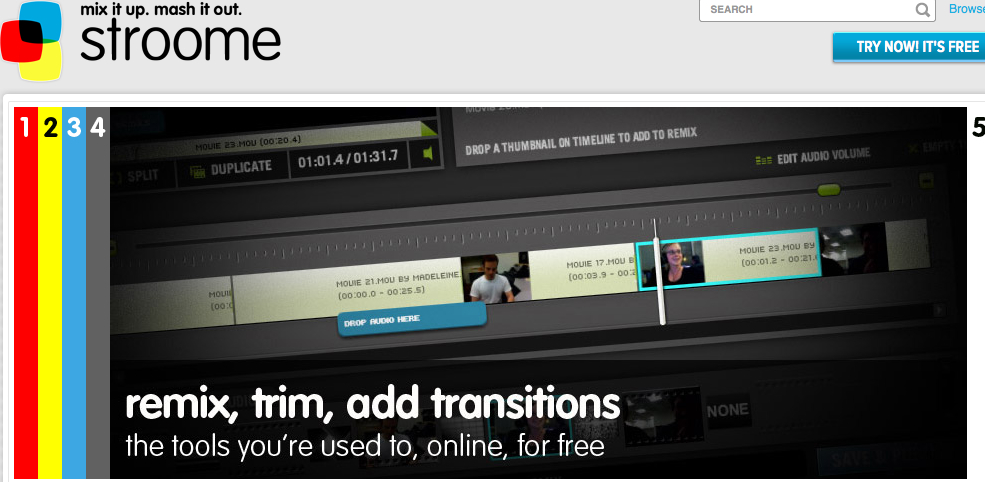Bridging the Participation Gap
Screen Grab from the collaborative editing platform Stroome.com.
In Convergence Culture: Where Old and New Media Collide, Henry Jenkins discusses how the convergence of new and old media should be thought of not as a shift in technology, rather a shift in how we think and relate to media. The newly acquired skills, resulting from new media, can influence how participants “learn, work, participate in the political process, and connect with other people around the world.” In looking at 2011's Arab Spring, we certainly see how the youth utilized converging media as a catalyst to unite populations and to call for dramatic changes in their societies and governments.
At the same time, Jenkins warns us of the participation gap that can occur as part of the digital divide. He outlines the how early adopters of the new media technology (white, middle class, male, educated) risk dominating the cultural discourse. Advertisers and media producers could orient their work toward select audiences and neglect those who fall into the participation gap. Yet, what he outlines isn’t terribly different from production practices prior to convergence and Jenkins further outlines the potential for audiences to become empowered in “a space at the intersection between old and new media....”
Digital video cameras made videomaking affordable to a great number of individuals but prior to YouTube and Vimeo, finding an audience was still elusive. Now with crowdsourcing technology, such as Stroome or, even simpler, YouTube, Vimeo, Facebook, etc., participants can create, share and find an audience and bridge the gap with a single cell phone.
The closing of this gap means that a greater and a wider variety of people are able to participate in the online, collective, public commons – to interact and collaborate with one another as peers. The relationship between online collaborators as peers – rather than in a hierarchical model dictated by film industrial models or by economic or geographic strata – is a critical step in understanding how crowdsourcing can more deeply engage viewers.
| Previous page on path | Emotional Multiplicities in Multi-Sourced Work, page 5 of 15 | Next page on path |

Discussion of "Bridging the Participation Gap"
Add your voice to this discussion.
Checking your signed in status ...